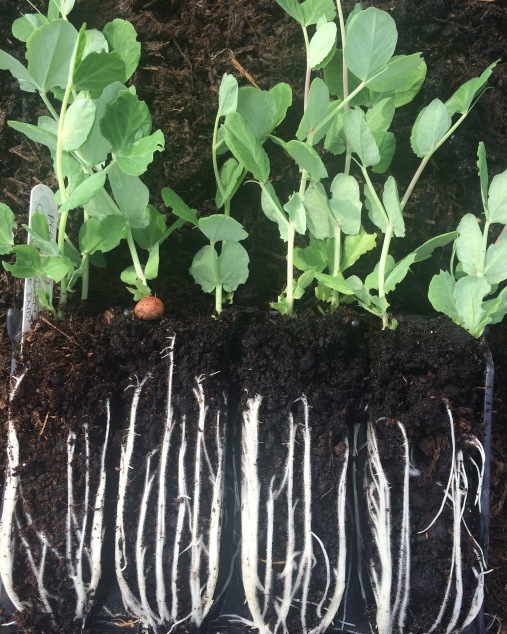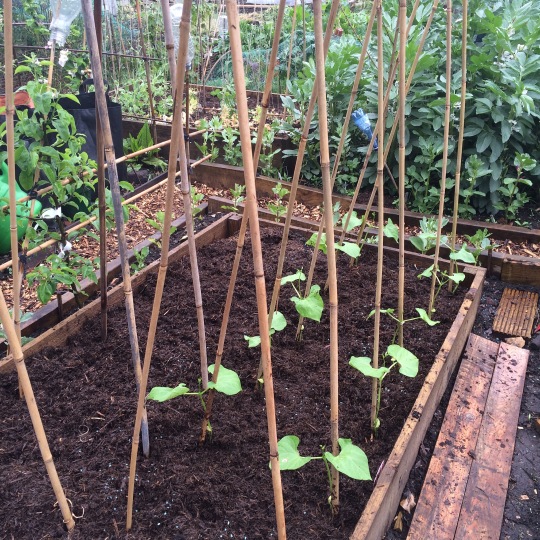…what next? A few people I know have just received the happy news that, after years of being on a very long allotment waiting list, they have been finally bumped up to the top and are about to get the keys to an exciting new world of digging, growing and harvesting.
I was so excited when I got my own allotment (after helping out on a friend’s for three years), I didn’t care that the plot was overgrown with couch grass and bindweed. It wasn’t so much a blank slate as a very messy green one – and I relished the challenge of bringing it under control.

But very weedy or overgrown plots can be off-putting in those first few weeks, particularly if you get your keys around now, just as the growing season is getting into full swing. So here are 10 tips for anyone who has just become a plotholder for the first time:
- Be open to advice from fellow allotmenteers, even if you don’t follow it. A big part of having an allotment is getting involved in a new, enthusiastic community, and you are bound to pick up some useful tips. In fact, see me as your new virtual allotment neighbour, coming over to say hello and offering you this advice.
- Your success in growing fruit and veg will always be down to the quality and care of your soil. This is the most important thing to get right. If the plot hasn’t been worked for several months, you will need to add some compost or composted manure to breathe life into it. Before you can make your own compost, which will take several months, it is worth buying some composted manure to dig in before sowing and planting. I promise the land will return the favour in bountiful harvests.

The success of plants like these lettuces will depend on good quality soil - If you have a plot that is completely overgrown with brambles and weeds, mark out a small section to clear and dig over first and start growing something in that bed. It is best to tackle your new plot one section at a time. The allotment site committee won’t mind the weeds if they can see some progress.
- Connected to the above, think about how much time you are going to be able to spend looking after your plot. Be realistic – it will need two hours a week, minimum. Use the time productively but also vary your jobs – don’t spend all your time digging and weeding, even if you have a lot to tackle. So, if you have two hours on a Sunday to spend on the plot, do an hour of weeding and digging and then use the next hour to sow some seeds, either in modules undercover if it’s still a bit chilly at night, or straight into the soil. If you get something growing in the first few weeks it will feel like you’ve made more progress than if you spend your whole time creating perfectly weed-free – yet empty – beds. Peas and lettuce are really easy as first crops and can be sown straight into the ground now, if you have prepared it right (see 2.) Short but regular bursts of time spent on the plot are better than a longer stint once a month.

Peas are a good, easy veg to get growing now - Don’t spend too much money on new expensive equipment. Basic tools to invest in are: a digging fork, a hoe for weeding (I use a small Japanese razor hoe), secateurs and a trowel. You will always need string, and I can never have enough bamboo canes for pea and bean supports, fruit espalier frames and makeshift fence posts.

I always need bamboo canes on my plot - Become a collector of junk, a scrounger of planks of wood from skips, a hoarder of plastic food trays and frappe latte cups. You can build cold frames, greenhouses and raised beds for free if you look hard enough outside all those homes having loft extensions.

A spring cabbage plant sown in a frappe latte cup - Come up with a strategy to defeat pests. They will come. Slugs will eat your lettuce seedlings, birds will attack your brassicas and, if your site is like ours, the squirrels will rampage through everything. Beer traps and organic pellets are cheap and safe methods to tackle slugs; nematodes are more expensive but efficiently deadly. Netting will keep the birds and squirrels away.

Netting keeps the birds off my redcurrants - Make a plan. I normally do mine in winter, but if you’ve just got your plot now you can spend a couple of evenings drawing a rough sketch of your plot and marking out beds, using crop rotation. Get some inspiration from Instagram or Pinterest.
- Find, build or inherit something to grow seedlings undercover. Perhaps you are incredibly lucky and have a greenhouse or shed on your new plot. If not, you can buy small plastic greenhouses for less than £20. It is worth it to start your seeds off earlier and keep the growing season going well into late autumn.

A cheap plastic greenhouse like this helps to extend the growing season - Have somewhere to sit. Make a seat from part of a tree trunk or a find an old plastic garden chair. Even though most plotholders will say they don’t do it enough, one of the best things about having an allotment is taking five minutes out to sit and look at all your hard work, to dream about what you will grow, to listen to birdsong, to drink a cup of tea and to take in the scent of sweet peas. Make yourself a seat, and make yourself sit in it.

It is nice to have somewhere to sit and admire the view

Such a good useful article
LikeLiked by 1 person
I love the frappe cup!
LikeLike
Thanks!
LikeLiked by 1 person